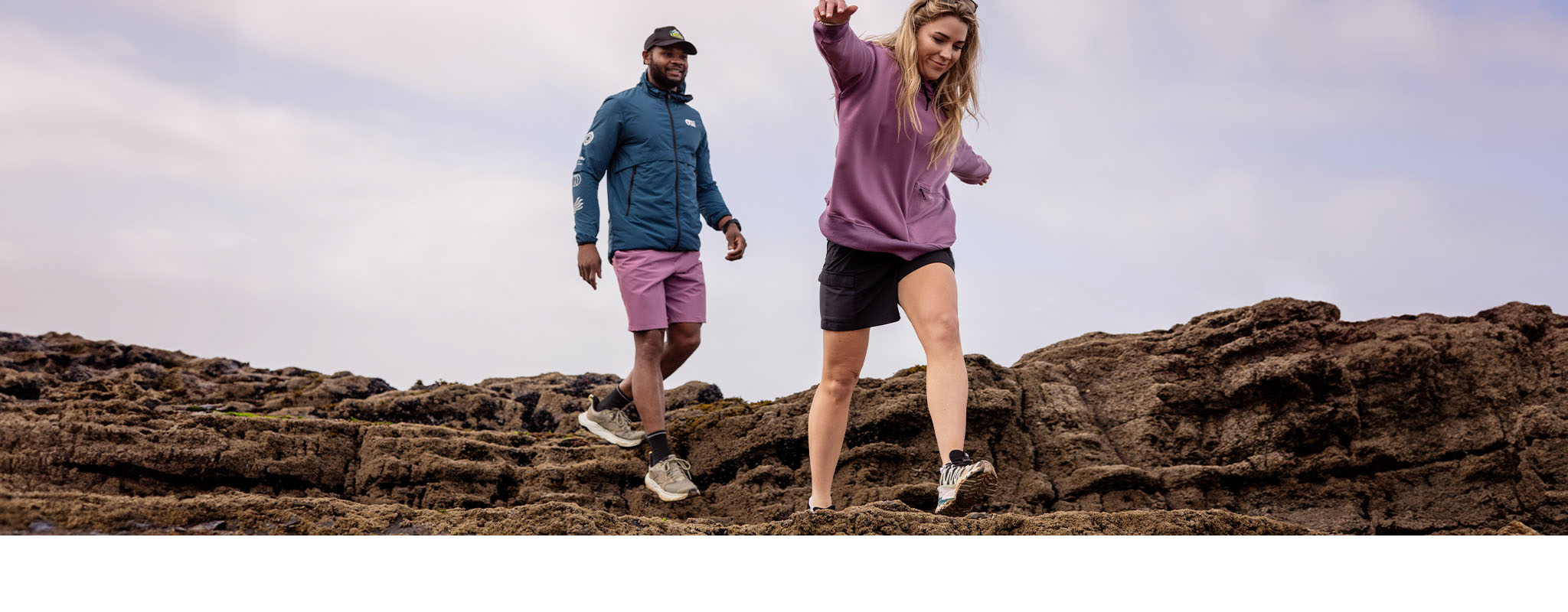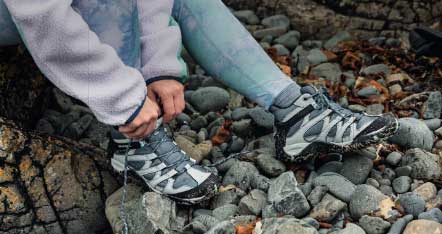When To Replace Your Walking Boots
Look out for the signs of when to repair, re-proof, and replace your walking boots...
Your favourite pair of walking boots are like an old friend. You’ve worn them in, they’ve accompanied you on countless adventures, and together, you’ve no doubt been to some sensational places and shared some incredible memories. Unfortunately, unlike an old friend, your walking boots do need to be repaired, re-proofed, and, eventually, replaced once they’ve reached a certain age.
At Cotswold Outdoor, we've created our guide to help you identify when the time has come to start investing in a new pair of walking boots or walking shoes for your next adventure.
How Long Do Walking Boots Last For?
There are no hard-and-fast rules about when's a good time to retire your old walking boots or shoes and how long they should last. Remember, 500 miles walked on concrete will wear soles down more quickly than 500 miles out on the hills, and anything from the way you walk to how well you care for your boots can affect their longevity, with different materials and soles wearing at different rates.
Forking out for a replacement pair unnecessarily is not only bad for the environment but also bad for your bank balance. Equally, struggling in shoes that have seen better days could damage your feet and cause injury. Worn or damaged soles are also dangerous as they won’t offer the grip you need to stay safe - that's why it’s so important to know the signs to look out for that your walking boots may need repairing or replacing.
Signs Your Boots Need Replacing:
There are a few tell-tale signs that will tell you if it’s time to hang up your trusty walking boots:
- Soles: Overly worn soles or worn-down lugs won’t grip the terrain properly, which can lead to accidents on uneven surfaces.
- Laces: If your laces have become frayed and the rest of your boots are in good condition, then replace the laces. Frayed laces indicate that your boot is becoming worn, so still make sure you give your shoes a thorough check-over to make sure.
- Midsoles: The midsole is the part between the sole and the upper that provides vital cushioning for your foot. Cracks in the midsole indicate that it’s too worn, and this will compromise your shoe's support.
- Eyelets and lace hoops: Broken eyelets or lace hoops can prevent you from lacing your boots tightly enough, causing painful blisters.
- Shape: Misshapen boots won’t provide support to your foot and ankle.
- Fabric or leather: Check the boot fabric or leather. Worn leather or damaged fabric can soon start leaking.
Things To Look Out For When Walking:
Do they leak?
If your boots have been reproofed and are still leaking, they need replacing.
Are you slipping?
If your boots start to feel unstable or aren’t gripping uneven surfaces like they used to, the sole may be too worn.
Do they feel uncomfortable?
Unusual aches and pains (especially in the legs) or more blisters than normal can mean they’re not providing the support they should.
Can you feel the ground underneath?
Worn-down soles expose your feet to all the lumps and bumps beneath.
Are things getting inside?
Older, looser boots can let in more stones and dirt than they should. If you’re collecting dirt and debris on every walk, it may be a sign it’s time for some new boots.
How To Make Your Boots Last Longer:
Save for walks and hikes
No matter how much you love them, don’t be tempted to wear your walking boots uptown or to the pub. Concrete wears down soles quickly, and they’ll last much longer if they’re reserved for the hills.
Scrub them clean
Mud, perspiration, and other nasties left on your boots between outings can lead to cracks in the leather or deterioration of the fabric. Dirt can also clog up membranes like GORE-TEX®, preventing the breathable membrane from working and causing sweaty feet, so keep them clean to ensure they can do their job properly. After a muddy walk, clean your boots with warm water to keep them in tip-top condition. For more help, why not take a look at our Boot Care Guide or take a look at using some of the cleaning products we recommend below:
Re-proof regularly
Both leather and fabric boots should be reproofed regularly to keep them at their best for longer. We recommend using our 60 Second Footwear Protection Service in-store, or take a look at using some of the reproofing products we recommend below:
Shop Our Care & Repair Range
To check out more from our footwear care and proofing range, click below to shop the entire collection...
Time For A New Pair?
Alternatively, why not pop into your local Cotswold Outdoor store for a Free Expert Boot Fitting? We’ll start by finding out what you love to do in the outdoors before fitting your perfect pair of boots – and finding the right socks to match – so you’re prepared to experience your outdoors in comfort for many years to come.
Shop Our Outdoor Footwear Range
To check out more from our men's and women's outdoor footwear range, click the button below to shop the entire collection...
Related articles

Let us know you agree to cookies
We use marketing, analytical and functional cookies as well as similar technologies to give you the best experience. Third parties, including social media platforms, often place tracking cookies on our site to show you personalised adverts outside of our website.
We store your cookie preferences for two years and you can edit your preferences via ‘manage cookies’ or through the cookie policy at the bottom of every page. For more information, please see our cookie policy.








